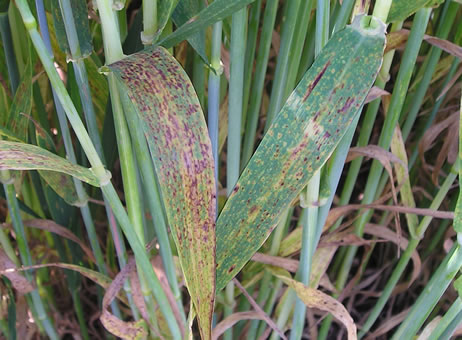
New guidance launched will help farmers spot and quantify ramularia symptoms much easier, which is becoming more of a widespread problem across the country.
Ramularia can cause extensive damage, responsible for losses in yield and quality. Yield losses in spring barley can be up to 0.6 tonnes per hectare.
Described within two new AHDB publications, the guidance has been issued following recent reductions in the efficacy of key fungicides used to control this foliar pathogen of barley.
Improved identification and quantification of ramularia symptoms will help farmers and advisers assess the effectiveness of control and devise appropriate management strategies.
The pathogen which causes ramularia – Ramularia collo-cygni – grows from infected seed and moves systematically within both winter and spring barley crops.
Symptoms, which often develop rapidly, appear on dying leaves throughout the season but occur most frequently on upper leaves after ear emergence.
The 5Rs
As symptoms are frequently misdiagnosed, the new publications illustrate how mature ramularia lesions can be distinguished from other foliar symptoms by applying the '5Rs’.
This includes ringed with yellow margin of chlorosis; rectangular shape; restricted by the leaf veins; reddish-brown colouration and right through the leaf.
The ‘Ramularia leaf spot in barley’ factsheet also includes information on the life cycle of ramularia and control options. A more detailed accompanying guide allows ramularia symptoms to be identified and severity scored.
Paul Gosling, who manages disease research at AHDB, said: “All barley varieties on the AHDB Recommended Lists are relatively susceptible to ramularia. This means protectant fungicides, applied at the booting stage, GS45 to GS49, are often required.
“Fungicide performance trials, however, show resistance to foliar fungicides is increasing, so chemistry needs to be used with care.
“Strobilurins haven’t been effective against ramularia for quite a while and there have been changes in sensitivity to SDHIs and azoles recently too.
“As chlorothalonil has no recorded issues with resistance development, it should be included in programmes to ensure effective control and to slow the spread of insensitivities to other fungicides.”
